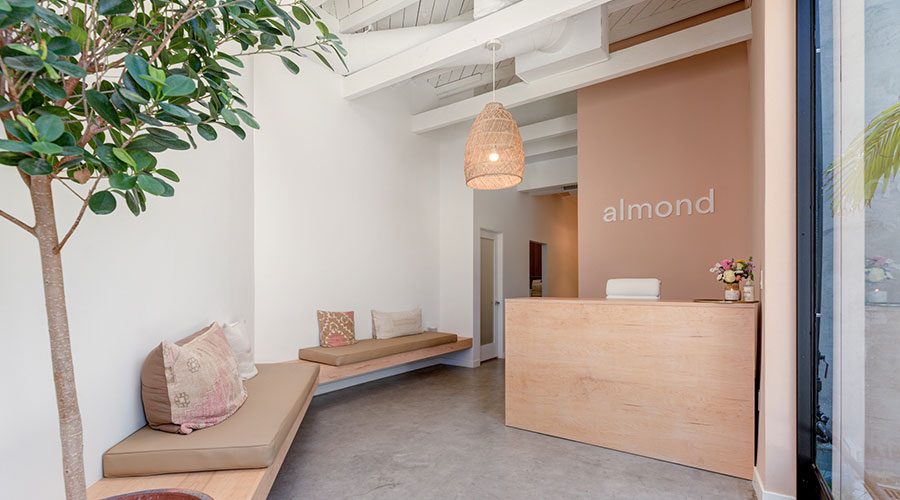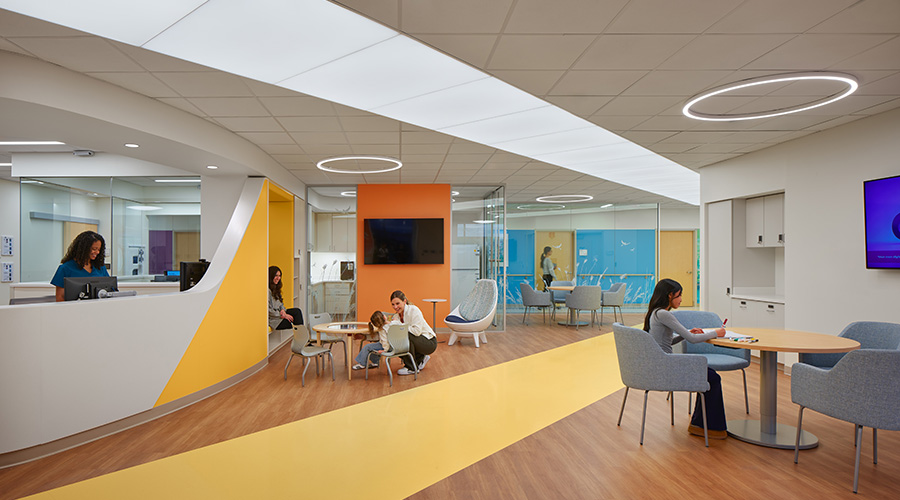The term gynecology office often evokes a daunting image: a long white hallway, harsh bright lights and clinical tables. But why does it have to be this way? Isn't there a way to design gynecology offices differently today?
The OB-GYN sector is the second largest medical market in the United States, with 130 million women needing to visit an OB-GYN at least once a year. Yet over 75 percent of women are dissatisfied with their care. How does one design healthcare spaces that truly cater to women? There are a few important design factors to consider:
Emphasize comfort and connection. Creating healthcare spaces for women does not mean they need to be expensive or extravagant. When designing medical environments that resonate with women, it is essential to consider what they truly seek in their care — a pleasant experience that prioritizes comfort. By emphasizing human connections and delivering better medical outcomes, these offices can become inviting spaces where women feel comfortable and well taken care of.
It is easy to remember the uncomfortable feeling of sitting in a medical office that has not been updated in decades. Consider the impact this experience has on office staff and patients in the waiting room, who sometimes face difficult moments in their lives. The power of design can significantly shape patient experiences, and it requires a delicate balance to create medical spaces that avoid a sterile appearance while maintaining a professional, tranquil and comforting environment.
For the design of Almond’s office, we aimed to align the office with our values: minimalism and intentionality, influenced by elements that bring us joy. Our greatest inspiration has been the vitality and freshness of a garden — its vibrant colors, natural irregularities and the intricate textures you notice upon close inspection.
Creating joy and showcasing individuality. Imagine if we celebrated the wonder of our bodies and had medical offices that infused vitality into our days, embracing us as we are. Small design touches can evoke this sense of joy, such as quirky decor like a bowl of beautiful, bright tangerines welcoming patients as they enter the space. Significant design elements also can reinforce this idea. They include high ceilings flooding the area with natural light, expansive walls of glass windows, skylights offering light and privacy and the inviting warmth of smooth natural wood.
While the quality of patient care remains paramount, small design touches can evoke moments of surprise, laughter or a smile on patients' faces. Serious work is essential in medical settings, but there is value in incorporating bright colors, creatively named exam rooms and unique decor.
Design impacting the patient experience. Medical design should convey an explicit message to patients: We care. This message should reflect a celebration of the patient's body and their emotional journey. Every aspect of design should communicate that doctors are attentive to their needs.
Design impacts the way patients feel, and it influences the communication between care providers and patients. From the outset of our office’s opening, patients enter with a sense of surprise as they experience an inviting atmosphere in a healthcare setting. Patients’ lighter, happier demeanor often sets the stage for more meaningful interactions.
The design of healthcare spaces can significantly affect the quality of the patient-provider relationship, ultimately impacting communication and comfort. So when planning the construction or renovation of a healthcare facility, it is imperative to pause and reassess the patients the office serves. In the case of OB-GYN offices and other women's health facilities, design should actively contribute to crafting a nurturing environment tailored to the specific needs of women.
Tara Raffi and Carly Allen are co-founders of Almond ObGyn.

 Contaminants Under Foot: A Closer Look at Patient Room Floors
Contaminants Under Foot: A Closer Look at Patient Room Floors Power Outages Largely Driven by Extreme Weather Events
Power Outages Largely Driven by Extreme Weather Events Nemours Children's Health Opens New Moseley Foundation Institute Hospital
Nemours Children's Health Opens New Moseley Foundation Institute Hospital Code Compliance Isn't Enough for Healthcare Resilience
Code Compliance Isn't Enough for Healthcare Resilience Ribbon Cutting Marks First Phase Completion for New Montefiore Einstein Facility
Ribbon Cutting Marks First Phase Completion for New Montefiore Einstein Facility